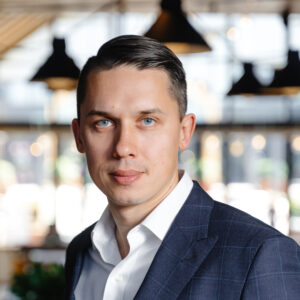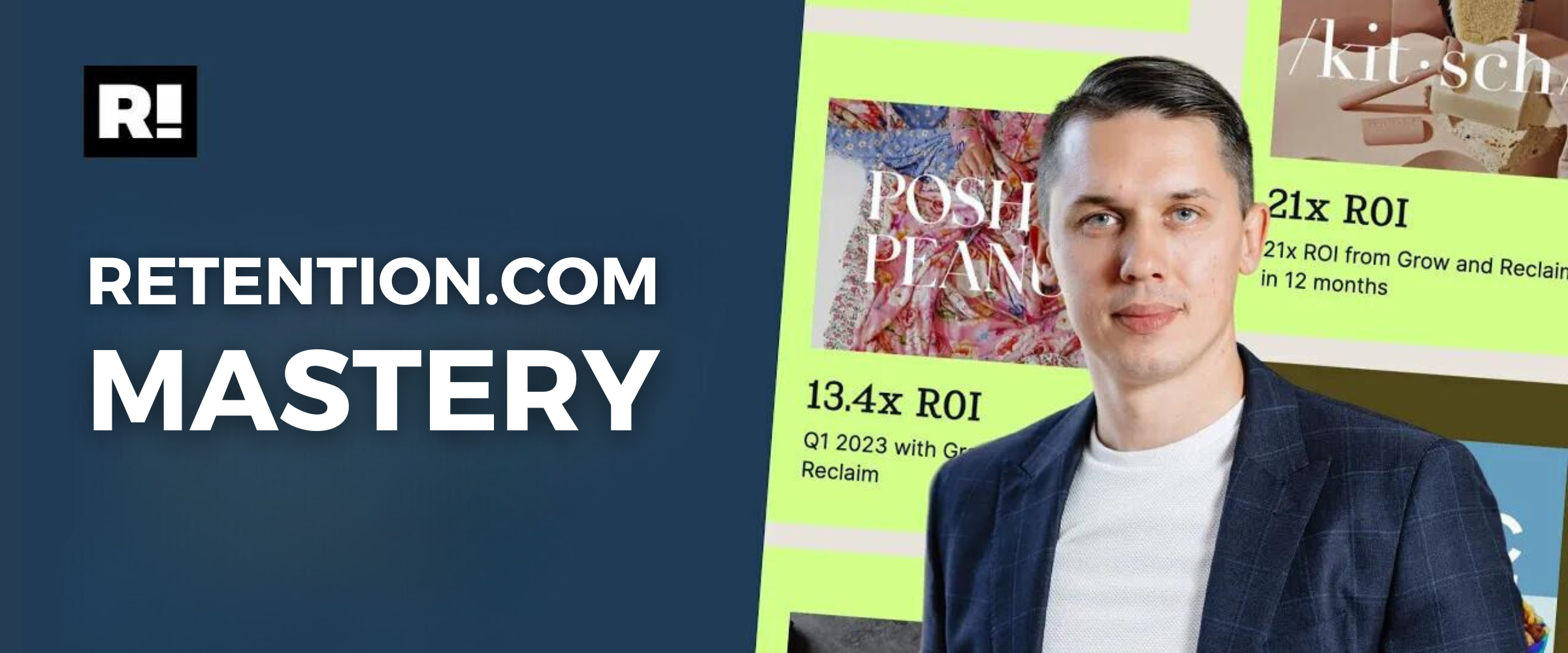Nowadays, your online marketing needs to be spot-on if you want to keep your ecommerce business running smoothly. The moment a customer places an order is crucial because this is your chance to set them up for becoming a recurrent buyer. Sending a post-purchase email is one of the many strategies online sellers use to support the established connection with existing clients and keep them coming back to buy more.
In this article, we’ll share valuable tips on how to create the best post-purchase emails from Flowium’s email marketing professionals. Read ahead to find out about the importance of this email series and see prominent examples from successful brands.
What is a Post-Purchase Email?
When it comes to this type of campaign, the name suggests the definition. You can send post-purchase emails after your clients have placed an order on your ecommerce website.
The post-purchase follow-up email usually contains important details about the transaction, product information, shipping, etc. You can also expand this campaign by adding more instructional or promotional content meant to increase retention or promote a repetitive purchase.
Why Send Post-Purchase Emails
Many businesses disregard post-purchase emails, thinking that they succeeded after their clients check out. However, experienced online sellers and marketing specialists know that this is only the first base in a long-run strategy. Your true goal must be getting a consistent and loyal client base, as well as building a solid reputation and connections. That’s why you need to double your effort after customers buy from your brand, using the post-purchase email series as an excellent way to keep existing customers engaged.
By sending these messages, you reassure customers that you have their best interests at heart. You are ensuring that your brand and products remain firmly in their minds and letting them know that you are available to them should they need to make additional purchases in the future.
Overall, investing in this type of campaign brings you long-term benefits, improving your reputation, service, and communication with clientele. Here are the main advantages that you can achieve.
- Successful Customer Retention
Employing after-sale email promotions is one of the best practices for customer retention. By sending out post-purchase follow-up emails and keeping in contact with clients during the ordering and shipping process, you make sure they have a positive shopping experience with your brand. It automates the process of notifying people about the status of an order and accordingly reduces the number of support requests with such questions, which has a positive impact on the customer experience. High-quality promotional content can encourage them to stay in your customer community and buy again.
- Improved Customer Lifetime Value
A one-time buyer can become a regular if they’re satisfied with your product, communication style, and personalized approach. While the first one depends on production, the other two points can be checked out with strategic post-purchase email marketing. Professional marketers use it to improve customer lifetime value. For example, if a client bought a phone from you, they likely won’t need another one for a couple of years, but you can send them a cross-sell email with personalized product recommendations (e.g. phone accessories, chargers, headphones, earbuds, etc.) Overall, this allows your email marketing strategy to yield more sales and ROI.
- Enhanced Brand Reputation
Receiving radio silence from an online store after ordering and checking out is a nightmare for clients, as it makes them doubt their purchases and the company they ordered from. That’s why establishing immediate contact by sending confirmation messages is important to increase the trustworthiness of your business and build a solid reputation.
- Better Customer Service Thanks to Feedback
Post-purchase email campaigns allow you not only to deliver important info to clients but also to receive it back. You can ask for product reviews and client feedback on their experience. Then use this information to your advantage to drive your business forward by working on the mentioned pain points. Moreover, it’s a good practice to use the received feedback as social proof in your future promotional campaigns.
Benefits of Post-Purchase Email Flow for Ecommerce
Many ecommerce business owners may already have a variety of automated workflows in place. By setting up automated post-purchase email sequences, you can use certain “triggers” to send relevant information to specific client database segments at precise times. These triggers include:
- Immediate triggers when clients complete purchasing.
- Order status changes (shipped, out for delivery, delivered, etc.).
- Based on the product type for educational, cross-sell, and upsell emails.
- First purchase email triggered for first-time buyers promoting loyalty and referral programs.
- Activity/inactivity time for re-engagement campaigns.
According to research by Klaviyo, post-purchase email automation can yield up to 30 times more income per recipient than campaigns due to their timely and tailored nature. It shows that this flow can generate:
- Open rates 17% higher than the average email automation (61.68% on average);
- Average 3.97% click rate;
- 0.54% placed order rate.
Popular Post-Purchase Email Types
There are many types of campaigns that you can send to clients after they buy your products. Mainly we can group them into transactional post-purchase emails and promotional post-purchase emails. The first type is meant to follow up with the client after the checkout process, and the second is sent out to clients sometime after the purchase to promote more products and services. Let’s see what other popular post-purchase emails can be sent by ecommerce brands.
Thank-You Email
When someone places an order, whether it’s expensive or inexpensive, they expect some kind of communication. Without communication, your customers may feel like they made a bad choice, regardless of the product’s cost.
Sending a thank-you note after a customer completes a transaction is the easiest method to stay in touch with them. Express gratitude to your clients for choosing your brand and let them know your relationship doesn’t end when they check out. If you warmly thank them and let them know what to expect, they’ll feel reassured and confident in their decision.
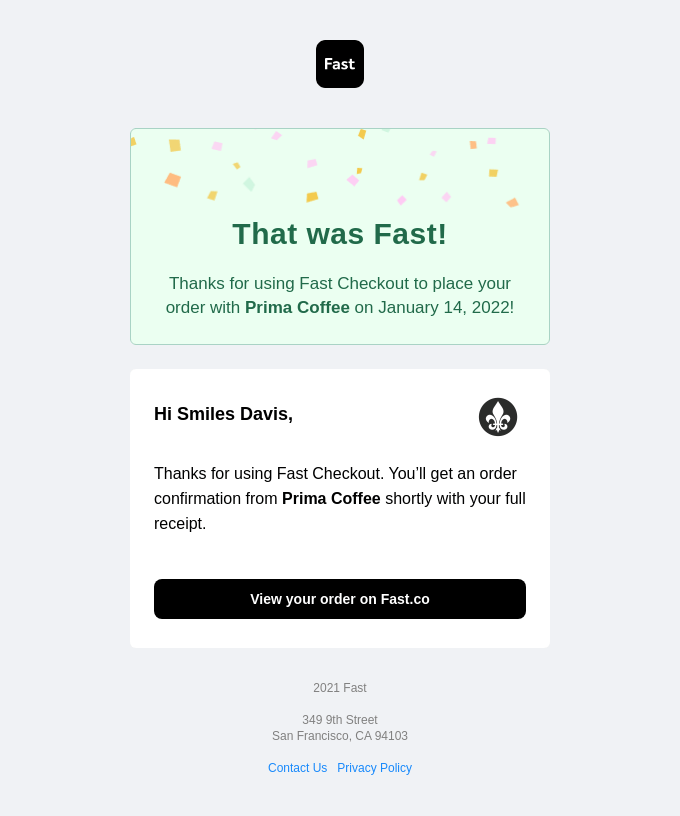
Order Confirmation Email
Customers expect a receipt when they purchase something from you. They also want you to confirm the order and let them know when they can expect to receive their items. Finally, they want to be able to track the item when it is shipped. This type of post-purchase email gives clients more confidence in order success and your communication.

Shipping Confirmation Emails
Shipping confirmations notify clients that their orders have been prepared and shipped. This message in your post-purchase email flow gives clients important information on the status of their orders, amplifying their confidence and assurance in your brand. It usually includes product data, order and delivery dates, delivery addresses, shipment methods, tracking codes, and payment information.
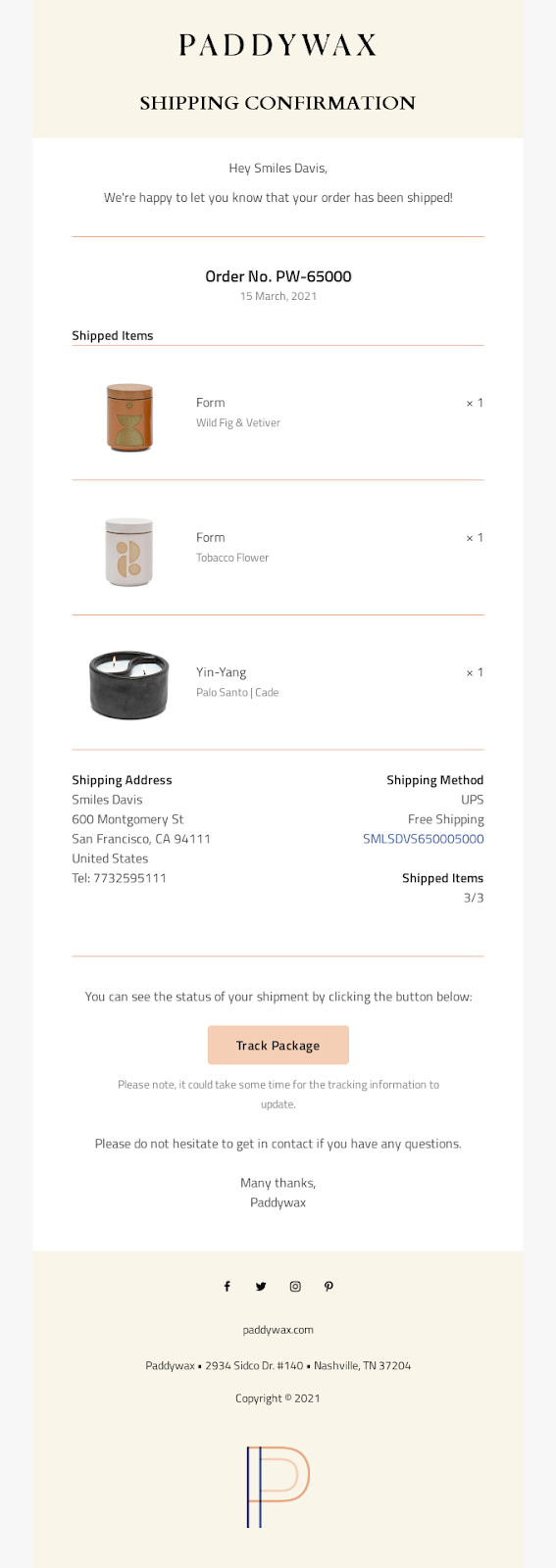
Delivery Confirmation
Emails with delivery confirmations are a terrific approach to satisfy consumers who are anxious and want to know the exact time of their order’s arrival. These emails can give consumers eagerly expecting their orders even more peace of mind, particularly if your shop has lengthy shipping times or is currently experiencing shipping delays.
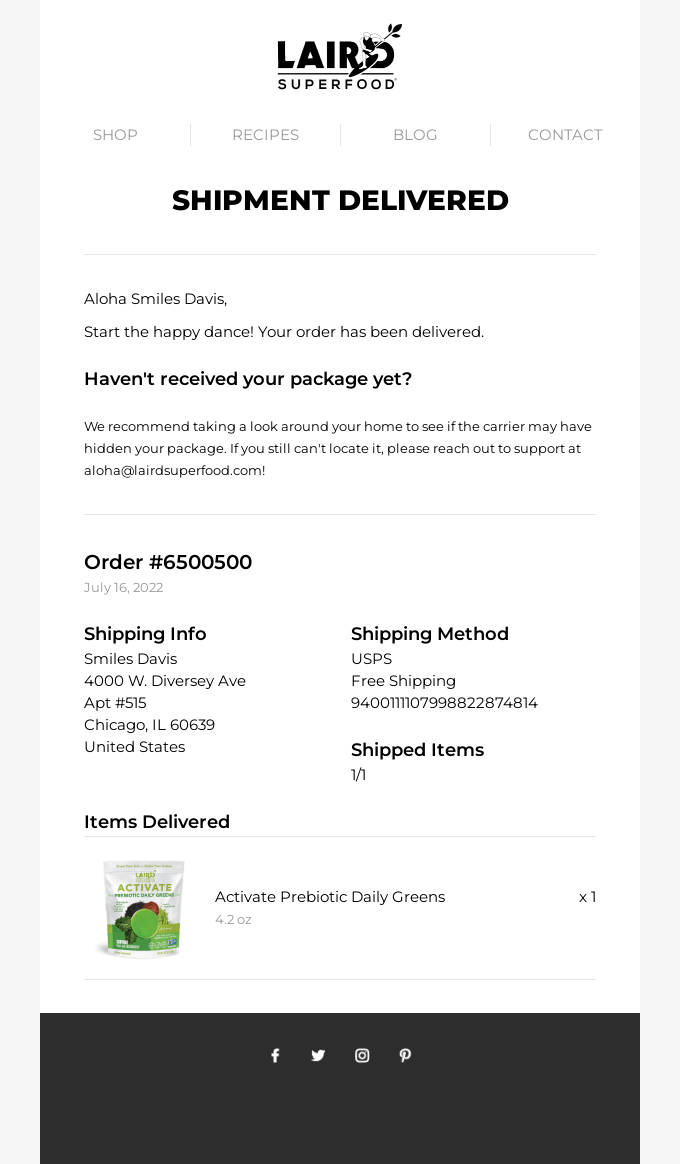
Cross-Sell and Upsell Emails
Automated email campaigns that cross-sell and upsell aim to persuade new consumers to make a second purchase on the same day as their first order. We recommend sending it 10 to 15 minutes after a customer places an order. These marketing campaigns offer special discounts or promotions on related products to capitalize on the customer’s current purchase momentum.
This email aims to drive an additional sale by offering a low-cost, high-margin item at a substantial discount (e.g., 30% off). This offer is crucial because it is time-sensitive; it should last 15 minutes to a few hours (but no more than four hours). With this strategy, you can boost sales instantly and enhance customer retention by making purchasing more pleasurable and rewarding.
While it might seem aggressive to ask them to buy again so soon, studies show that customers are most likely to make another purchase on the same day as their first.

FAQ and Customer Support Email
This follow-up email should be sent the next day and include:
- A thank-you message
- Answers to frequently asked questions
- Customer support contact details (email and phone)
- An invitation to join our community to encourage engagement
Clearly outline your process so customers know what to expect. It should be detailed enough to set expectations, especially during high-demand periods like Black Friday and Cyber Monday when delays are common.
For example:
“Typically, shipping within the U.S. takes seven days. However, due to [reason], it may take up to 14 days.”
Keeping customers informed helps manage expectations and improves their overall experience.

How-To Emails
It might be worthwhile to send out a how-to after-purchase email if your product offers instructions or if using it well needs some know-how.
An instructional or how-to email after a purchase can cover a wide range of topics, such as how to use, assemble, or care for a product. This kind of email can even help boost the number of repeat purchases and decrease the likelihood that customers will return their new purchases.

Review and Feedback Request Campaign
This email should be sent after the customer has received and used the product. Its purpose is to gather feedback and encourage engagement. It can include questions like:
- How did you find out about us?
- How was your shopping experience?
- What do you think of the product?
This email helps you collect valuable insights while strengthening your customer relationship. There are two main reasons for this: you get to see what aspects of your service need improvement and you get to see user-generated content. Reviews and testimonials have the power to both draw in new customers and retain current ones. Feedback also enables you to work on your mistakes so that you may just give your clients satisfying experiences. Make it a point to periodically solicit comments and evaluate how the most recent results advance.

Loyalty Program Emails
The best moment to advertise your rewards or loyalty program is right after a customer makes a purchase. One of the best ways to encourage new customers to return for more purchases is to show them that they may earn rewards the more they spend with your store. Clear rewards like discounts, bonuses, or presents encourage the audience to participate. Incentives that are specifically designed for each customer’s behavior boost the efficacy of loyalty programs.

Referral Campaigns
The finest thing a consumer can do to support your business is to recommend your product to their friends and family if they are happy with it. And what better method to encourage them to do so than to advertise your post-purchase referral program?
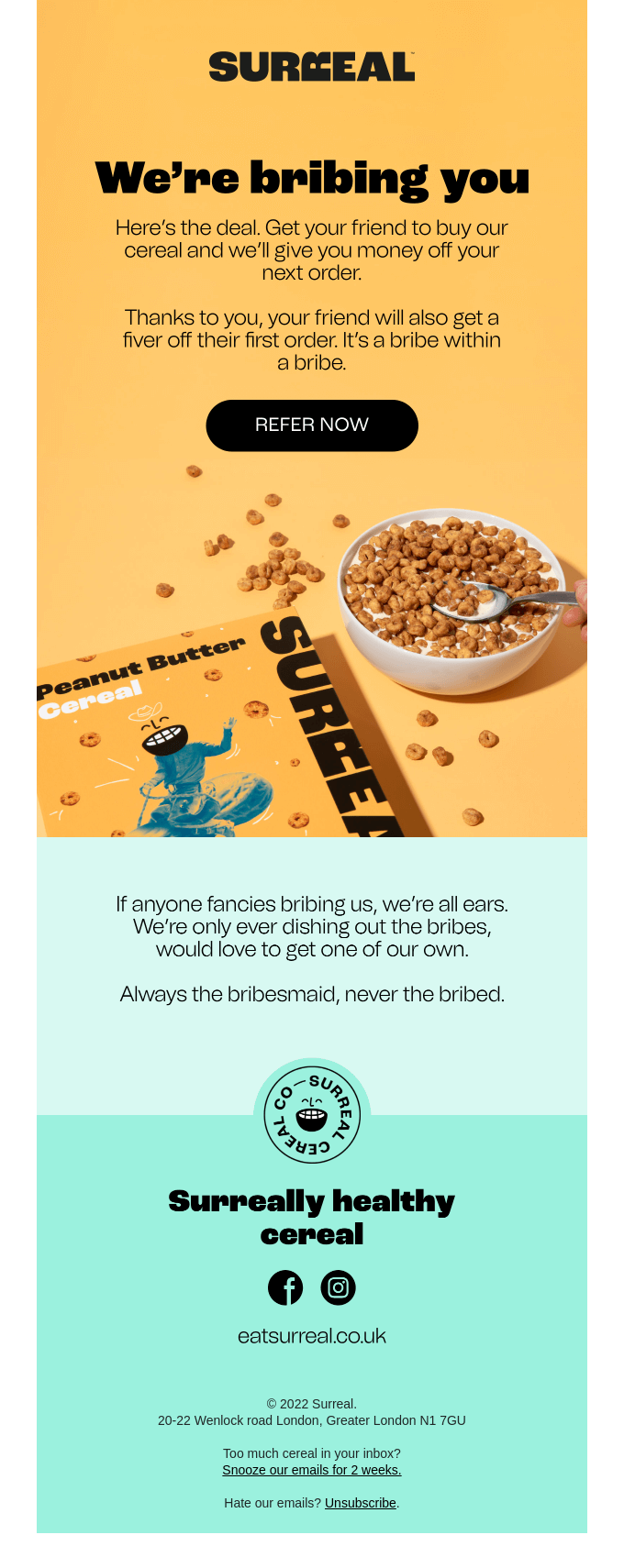
Winback Campaigns
Win-back emails are a series of emails designed to pique a customer’s interest once more. This sequence of communications will be sent to customers who have lost contact and haven’t bought anything from you in a long time.
The primary purpose of win-back campaign emails is to persuade customers to come back and resume using the service. Your objective should be to get people to engage with your communications.

Sunset Sequence
An automated email marketing campaign known as Sunset Flow is sent to inactive subscribers. A person is said to be “inactive” if they haven’t opened your emails for a predetermined period, up to 90 days. Emails will be sent out at sunset as a result of this activating the automated. Through focused email correspondence, the sunset sequence aims to reacquaint your connections with you.

How to Create Effective Post-Purchase Email Campaigns
- Personalize Messages
Customers enjoy having their wants and needs acknowledged and taken care of. Address their particular case and potential questions depending on purchase history. They also feel appreciated and seen when their first names are used in a personalized post-purchase email campaign. By checking in and gathering data frequently, you can improve their experience and make your campaigns more effective.
- Choose Proper Timing
Finding the optimal time for sending post-purchase emails is key to success, especially regarding transactional messages. For promotional, it works the same—receiving information or product recommendations after a client has long forgotten when they first bought from you, won’t work. Your first follow-up should be within 24 hours after the order, and regular with any order status change. Keep the correct timing for your entire email sequence, setting it up based on engagement level.
- Set Clear Expectation
To ensure that clients won’t be disappointed in your service, provide information on your processes and terms clearly. Describe your shipping procedure and the anticipated time of delivery. Be open and honest about any delays that can occur during busy times.
- Offer Appealing Incentive
Give customers incentives like discounts and gifts to make them pick you over competitors in your promotional post-purchase emails. When they see a clearly beneficial deal, they’re more likely to follow through with your offer and buy something again.
- Add Easy Contact Options
Don’t forget to add additional ways how to contact you in case clients have more questions about their order. We recommend adding them to the email footer to keep the main content clutter-free.
- Provide Helpful Resources
To answer the most significant questions about purchased products without overloading the email, we advise adding links to helpful resources. You can put in a video (read our guide on how to embed videos), links to downloadable instructions, receipts, usage tips, and other product info.
- Make Direct CTA
Make sure that all instructions in your message are clear and direct, allowing clients to quickly understand why they receive a post-purchase email and what they can do with it. Use powerful action words and contrasting colors to make your calls to action stand out.
- Add Dynamic Order and Shipping Info
Removing the need for additional clicks or logins, including order and shipment details directly in confirmation emails improves the user experience.
- Make Flows for International Customers
You can address the specific interests and concerns of your international clients by designing email flows just for them. This will keep them informed and involved during the lengthy shipping procedure.
- A/B Test Post-Purchase Emails
Try a variety of offers, content styles, and subject lines to discover what gets the most engagement.
Post Purchase Email Segmentation Tips
For all of your automations including post-purchase email flow, it’s critical to follow the best segmentation practices. Here are some of them that we use for our projects and recommend you adhere to them as well.
- Differentiate Between New and Existing Clients
While a simple “thanks for coming back” could be more suited for repeat customers, new consumers might enjoy a little prod to sign up for a loyalty program.
- Take Care of the VIP Audience
Consider sending messages that direct high-spenders to your VIP club if you segment your audience based on price.
- Don’t Overwhelm Clients with Messages
Take into account things like newsletter subscriptions, welcome series, abandoned cart flows, transaction history, and eligibility for loyalty or VIP programs to avoid bombarding customers with too many emails. Segment post-purchase email flows by items or categories to improve performance and provide individualized experiences.
Post-Purchase Email Examples by Real Brands
To illustrate the benefits of these campaigns and their effectiveness, we look at various post-purchase email examples from other prosperous businesses.
Eero
Subject Line: eero order confirmation
Type: Thank-You email, Order Confirmation

This message from Eero, a brand that specializes in mesh Wi-Fi systems, is a stellar post-purchase email example. It has all the essential elements for order confirmation emails that we specified—a brief “thank-you” message, order details with a complete pricing breakdown, as well as an address for shipping so clients can check its correctness beforehand. To form clear expectations about the shipment period, the message provides information on approximate dates. The brand also adds contact info to give buyers an opportunity to ask questions or make corrections about their order before it’s shipped out.
Peloton
Subject Line: Got questions about Peloton? We’ve got you.
Type: FAQ and customer support email

This message by Peloton is an interesting example of how you can combine an informational and promotional after-purchase email. This is a unique case because the company sends it to a specific segment of clients who use Peloton’s special service “30-day home trial” which is basically a rental service. The main goal of this email is to answer the most popular questions about their product while simultaneously convincing them to buy it for good. The email contains illustrative images and strategically placed CTAs to encourage customers.
Ugmonk
Subject Line: Bundle Up
Type: Thank-you message, cross-sell/upsell email

In this email, we can see how masterly a brand can use bundle deals to cross-sell and upsell their goods. At the beginning of this first-purchase email example, marketers of Ugmonk add a thank-you message and then present other products that can interest clients based on their previous actions. They also use this campaign as an opportunity to present their gift guides to convince clients to see more of their offers and provide gift card alternatives.
J.Crew
Subject Line: Thoughts?
Type: Feedback request email
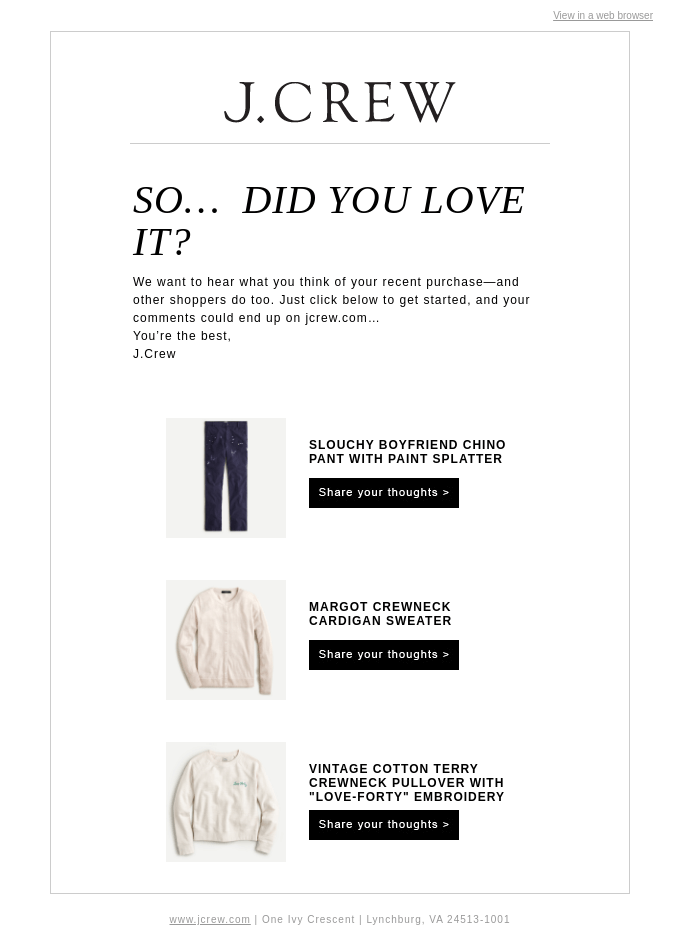
An excellent example of an email inviting customers to review a product after making a purchase is the one from J.Crew you can see above. It shows a high level of personalization using purchase history data as a basis which makes it relevant to the client and encourages engagement. The copy expresses sincereness together with a simple design to ensure clear intentions of the brand to make their service better.
Methodical Coffee
Subject Line: How Long To Steep Tea 🫖
Type: Educational “how-to” email
The ideal illustration of how companies can educate their customers after buying their products is this post-purchase email example from Methodical Coffee. The main goal of this campaign is to guarantee they use the product correctly by offering instructions and advice on how to brew their tea. To promote other products by the brand, the email also contains new arrivals and more categories to view and shop. Overall, the email has relaxing visuals that go in line with the branding.

Final Thoughts
Your firm can benefit greatly from an effective post-purchase email flow. This tried-and-true method is used by many well-known companies as part of their marketing strategy. Whether your brand is a reliable go-to shopping spot depends on how you manage that post-purchase phase. Contact professionals at Flowium if you need any assistance in creating post-purchase emails and setting up effective automation while preserving a personal touch.
FAQ
- When to send post-purchase emails?
Provide order confirmations right away, and shipment updates within a few hours. Promotional emails should be sent a few days following delivery. We recommend creating them with feedback from clients who have used your product.
- What is the difference between transactional and promotional post-purchase emails?
While promotional post-purchase emails promote interaction and subsequent purchases by offering deals, product recommendations, or invites to loyalty programs, transactional post-purchase emails include crucial order-related information (such as order confirmation and shipment updates).
- How many emails to include in the post-purchase email series?
We advise sending three transactional messages (confirmation, shipment, and delivery). Depending on client behavior, try to send out two to three promotional and engagement emails throughout the following month.


